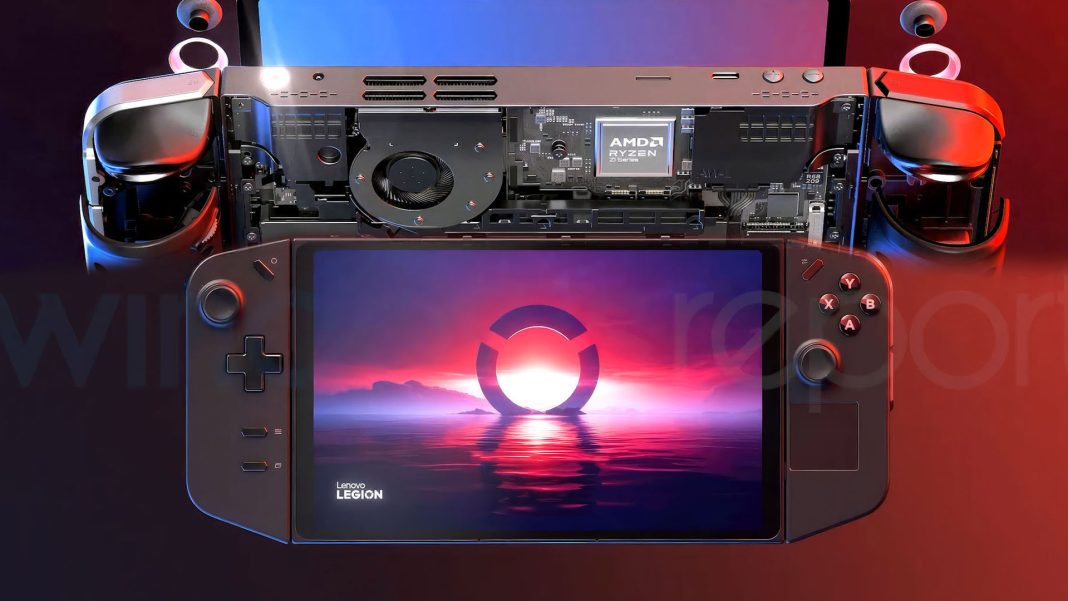In a market where gaming enthusiasts are spoiled for choice, Lenovo has thrown its hat into the ring, joining the likes of Asus and Logitech in the race to compete with Valve’s Steam Deck. Lenovo’s entry into the arena, the Lenovo Legion Go, is a formidable contender that brings a fresh perspective to portable gaming, offering a potent combination of premium components and innovative features.
At the heart of the Lenovo Legion Go lies the formidable AMD Ryzen Z1 Extreme APU, a powerhouse chip also found in the Asus ROG Ally. This gaming marvel is complemented by 16GB of DDR5 memory and a generous 256GB of M.2 Gen 4 storage, which can be expanded to a capacious 1TB. However, the standout feature is the colossal 8.8-inch 2560×1600 IPS display, boasting a rapid 144Hz refresh rate and a dazzling 500 nits of brightness. These impressive specifications easily outshine both the Steam Deck’s 7-inch 800p, 60Hz panel and the Ally’s 1080p 120Hz display of similar dimensions.
But the Lenovo Legion Go is more than just impressive specs. Its distinguishing feature is the detachable left- and right-hand controllers, reminiscent of the Nintendo Switch. These controllers go above and beyond with two extra rear programmable buttons on the left side, enhancing gameplay. The right side features a touchpad, four additional buttons in a standard mouse layout, and even a mouse wheel. Lenovo refers to this as the “FPS mode,” designed primarily for shooter games. When the controllers are detached, an optical sensor on the bottom activates, and the device’s rear kickstand extends, effectively transforming it into a modified vertical mouse.
The device’s hardware features do not stop there. The Lenovo Legion Go boasts a robust 49.2 watt-hour battery with “Super Rapid Charge” technology, capable of reaching 70 percent capacity in just thirty minutes. A battery bypass mode allows the unit to draw power directly from an outlet, preserving the battery’s longevity and preventing unnecessary heat. At maximum power, the system can operate at 25 watts of TGP. The inclusion of double USB-C ports enables simultaneous charging and accessory connection, with DisplayPort 1.4 handling external video output, supporting high refresh rates and 4K TV displays without a hitch.
One of the most remarkable add-ons is the separately available Legion Glasses, described as a “wearable monitor” headset. Connecting via USB-C, it provides a 1080p OLED video signal to each eye at a smooth 60Hz. While not on par with full VR headsets, the Legion Glasses offer a similar immersive experience akin to devices like TCL’s Nextwear or RayNeo XR, minus the augmented reality. Furthermore, thanks to the USB-C video standard, they are compatible with a wide range of other devices, including laptops, tablets, and smartphones.
The Lenovo Legion Go is set to debut in October, with a starting price of £699 for the base configuration. This price point places it in the same league as the ROG Ally but notably above the Steam Deck’s £400 entry point. While pricing for upgrades remains undisclosed, users can opt to supply their own SSD for an affordable storage boost. As an added incentive, each purchase of the Lenovo Legion Go will include a complimentary 30-day Xbox Game Pass code. However, the Legion Glasses, though an exciting addition, come at a hefty price tag of £329, nearly matching the cost of a Meta Quest 2 headset. Nevertheless, their versatility makes them an attractive choice for users seeking immersive experiences across various devices with USB-C video support.
Lenovo’s foray into the portable gaming market promises to be a game-changer, offering a compelling alternative to existing options. With its cutting-edge technology and innovative features, the Lenovo Legion Go is poised to carve out a niche for itself among gamers seeking a premium gaming experience on the go.


